Almost every Instagram fiend does it here. Stare into a skull, look pensive with an expression that captures the very essence of the question – “To be or not to be?”. This is after all Hamlet’s castle, in one of the most stunning locations of Denmark, and it’s not unusual to pose the question and strike a pose. But as the 2023 version of Hamlet pointed out, do remember you are competing with the likes of Laurence Oliver, Christopher Plummer and Jude Law.

The author strikes the inevitable pose Ashwin Rajagopalan
My journey back in time began in Copenhagen. Denmark’s transport system is super-efficient, and I’d recommend using the DOT Billeter App that creates a seamless connection between multiple modes of transport in and around Copenhagen. It took me less than two hours to reach Helsingor, a coastal town in Denmark’s eastern tip. William Shakespeare called it Elsinore (the anglicised version of Helsingor) in The Tragedy of Hamlet, Prince of Denmark, his longest play. All streets in this charming coastal town lead to Kronborg Castle, which most travellers from across the world know as Hamlet’s castle. It’s where my Helsingor adventure began.
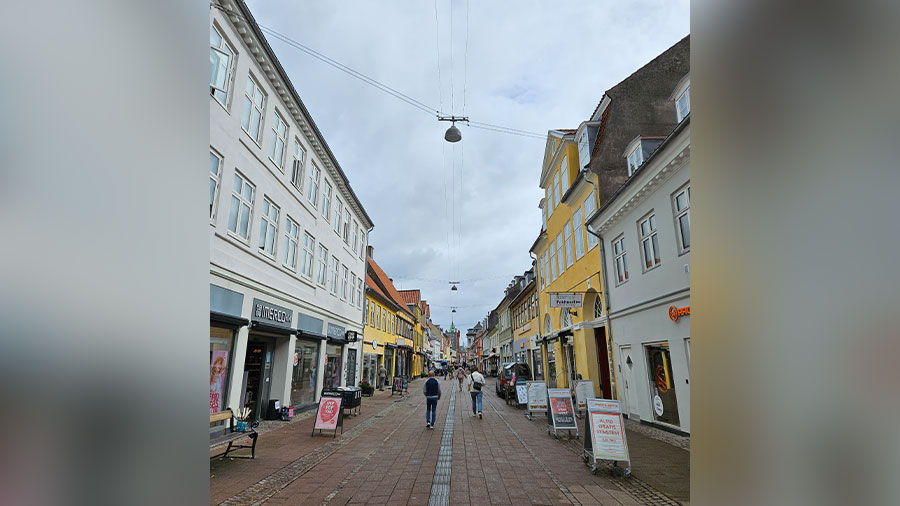
The charming, cobbled alleyways of Helsingor Ashwin Rajagopalan
There are multiple mysteries that surround the life and times of William Shakespeare. Did Shakespeare ever visit Kronborg Castle? That remains the question. But like most of us during the pandemic (who binge-watched OTT content set in exotic locations), Shakespeare did travel vicariously. He heard about the decadent lifestyle of the court from British actors, who used to visit the castle during his time. His description of the castle might almost lead you to believe that he spent time here.
To call this one of the most significant Renaissance-era castles in northern Europe is not an overstatement. It’s one of the reasons it was added to UNESCO’s World Heritage List in 2000. The castle’s back story is almost as fascinating as the legend of Hamlet. It was built in 1420 at a strategic location – the narrowest point of the Oresund (commonly known as the Sound) that separates Zealand in Denmark from Scania in Sweden. Helsingor is at the tip of the narrowest point (just 4km separate the port of Helsingborg in Sweden and Helsingor). So close to Sweden that my phone briefly switched to a Swedish mobile network while I was on the beach along the fort walls.
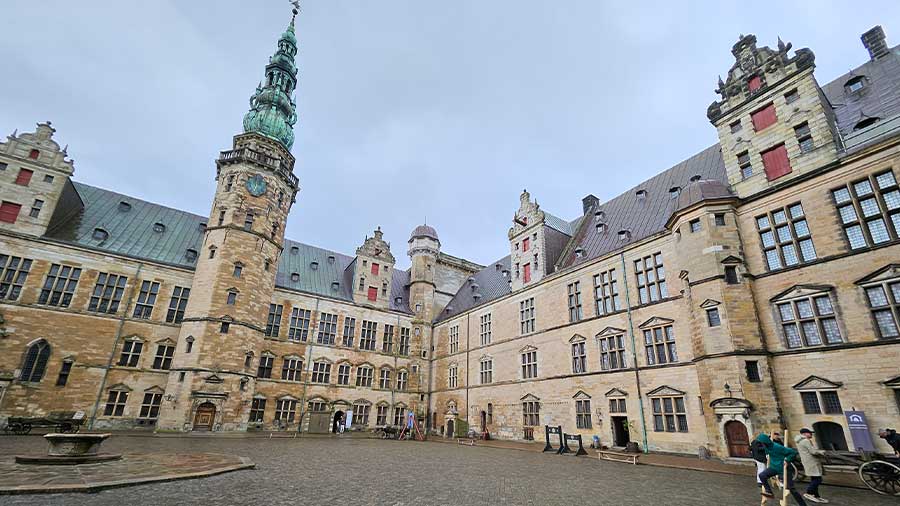
Another view of the castle Ashwin Rajagopalan
The medieval-era fort was transformed into an imposing Renaissance castle by King Frederick II between 1574 and 1585. The castle that eventually inspired Hamlet. A fire destroyed most of the castle in 1629 and it was rebuilt. But the interiors were not in the same league as the original castle. It’s not just a historic castle, but a symbol of Denmark’s maritime power. It’s estimated that 1.8 million ships crossed the Sound – a gateway of sorts to the Baltic Sea, between 1429 and 1857 and all paid a toll at Kronborg Castle.
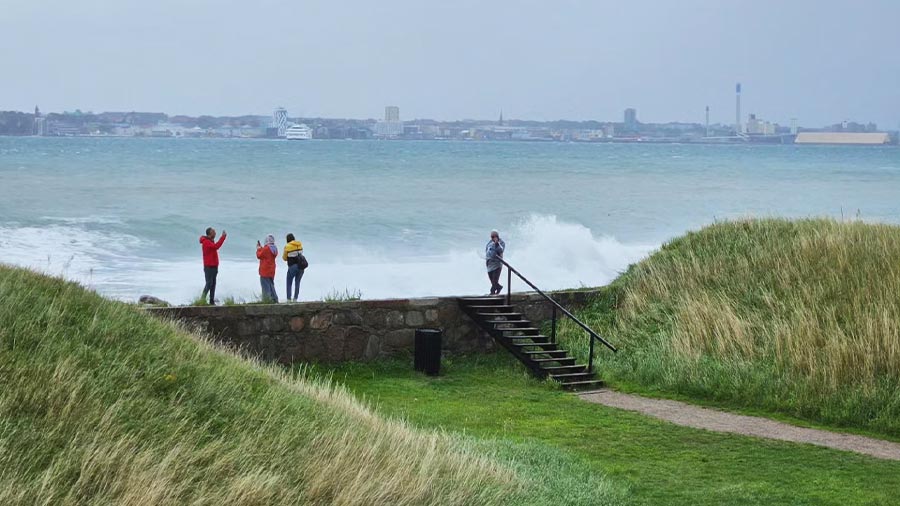
The beach along the fort walls Ashwin Rajagopalan
You will need about two hours to explore the castle and its surroundings. The castle features beautiful tapestries, you can make a stop at Frederick II’s ballroom and pop into the basement to meet the mythical figure of Holger the Dane. Of course, no visit to Helsingor is complete without meeting a Hamlet clone who is happy to pose with visitors or share his skull for those ‘I was there at the Hamlet Castle’ pictures. More than the castle, it’s the setting on the edge of the Baltic Sea that adds to the charm of Kronborg. This is one of those spots where a drone cam can be handy.
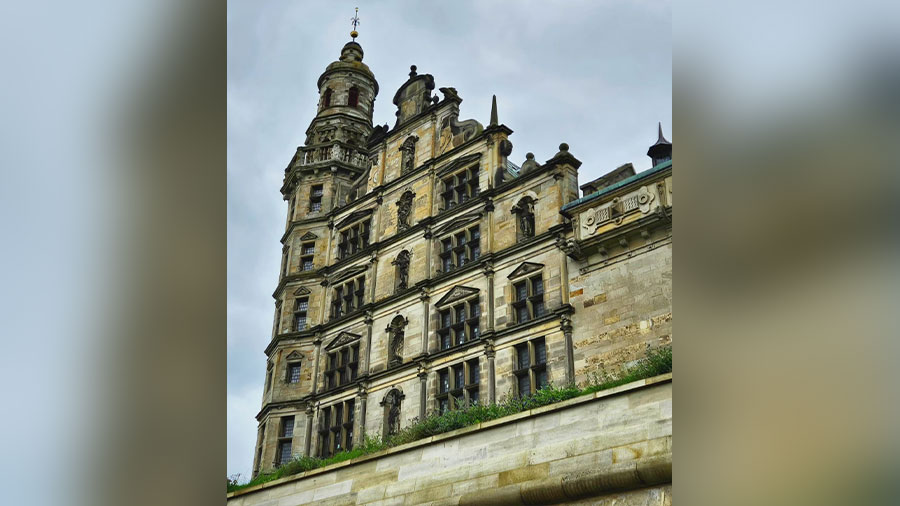
You will need about two hours to explore the castle and its surroundings Ashwin Rajagopalan
I braved an incessant drizzle and walked through Helsingor’s pedestrian-friendly streets. It’s easy to navigate the grid of narrow, cobbled streets that ooze medieval-era charm. There are multiple food stops. Netop Strejf is popular with visitors. Located in the main station building, it offers sweeping views of the Oresund and Kronborg Castle. I enjoyed my pit-stop at Bagt, a popular local bakery where the Danish pastries are a must try. If you’re spending a night in Helsingor, do make time to visit the street food market that is housed in the halls of the former shipping yard. It’s next to the Maritime Museum of Denmark and close to the castle.
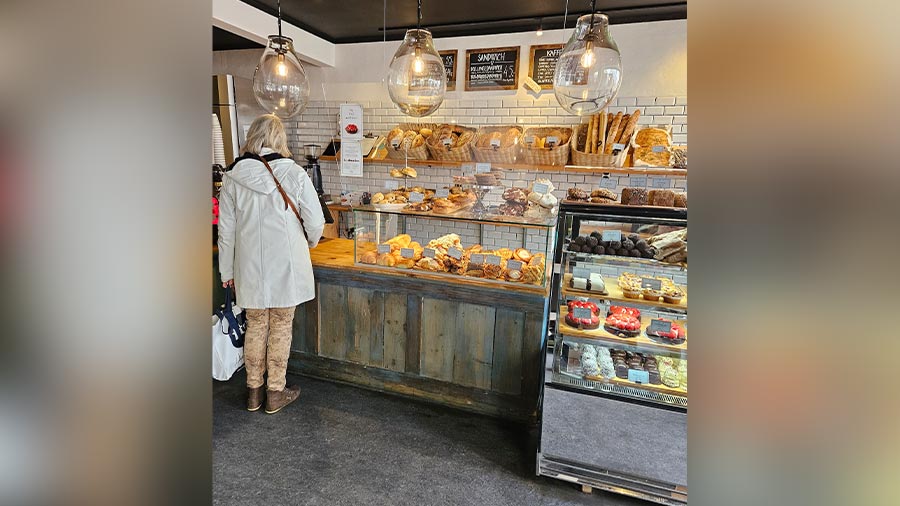
Bagt, a popular local bakery where the Danish pastries are a must try Ashwin Rajagopalan
Ultimately, Helsingor is about its Hamlet legends. Hamlet was first performed in the castle in 1816 (to coincide with William Shakespeare’s 200th death anniversary) with a cast comprised of soldiers from the castle garrison. The play has been performed multiple times at various locations at the castle and actors like Laurence Oliver and Jude Law (in 2009) have played Hamlet. Even if you don’t know your Shakespeare, Kronborg is still worth a visit. It’s a half-day trip from Copenhagen that’s packed with legends, beautiful beach panoramas and of course Danish pastries, all in a quintessential Scandinavian coastal town.


